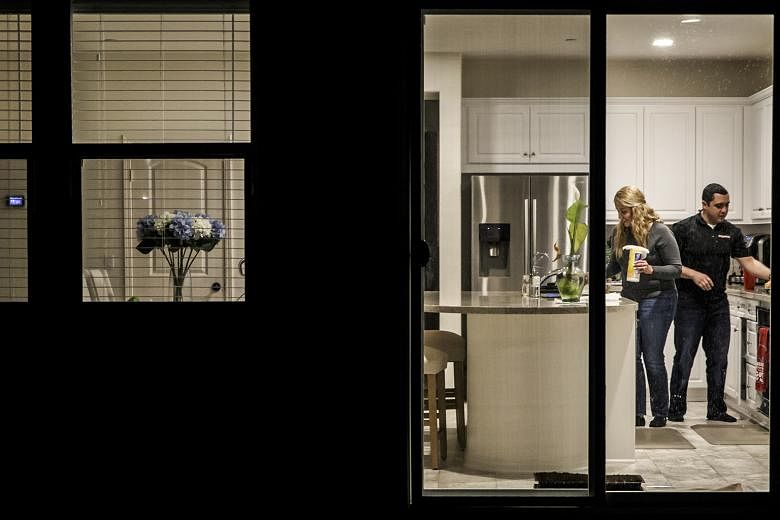FONTANA, CALIFORNIA • At first glance, Anthony and Vanessa Genau's home in a subdivision beneath the San Gabriel Mountains is like any other gracious new suburban dwelling, with open-plan living space, granite countertops and stainless steel appliances.
But, along with 19 other cream, taupe and rust stucco houses that cradle the landscaped playgrounds here, it is something else: a large- scale testing ground for an energy system of the future.
With a combination of rooftop solar panels, smart thermostats, advanced water heaters and other high-efficiency features, the homes are built with a similar goal: to make at least as much energy as they use over a year. It is a concept known as zero net energy and the cluster of homes represents one of the nation's largest experiments to see if zero net energy can be put into wider use.
"It's not that it cannot be done," said Mr Ram Narayanamurthy, technical executive at the Electric Power Research Institute, a nonprofit utility-funded group that is conducting the study. "The question that we're trying to answer is, 'Can it be done for everyone?'"
That question has urgency in California, whose goal is that all new homes be net-zero or the equivalent by 2020. But as the price of installing and operating once- rarefied technologies has plummeted, builders across the country are increasingly offering homes with the promise of comfort along with low - or almost no - electric bills.
The proliferation of zero-energy homes comes as the power industry struggles to adapt an old power system, in which centralised power plants distribute energy to thousands of homes, to new technologies. The growth of rooftop solar in states such as Hawaii and California has upended not only utility business models but also patterns of supply and demand. Solar power, by its nature, is intermittent, which places strain on utilities and grid operators that need to meet homeowners' energy demands at night when the sun is not shining, while also taking in the excess energy rooftop solar systems produce during daylight hours.
Although the proportion of homes with solar systems is not yet high enough in most markets to cause major problems, industry executives say it is important to study how that and other technologies affect the nation's power grid now.
Every house in the study is insulated with spray foam, sharply reducing the amount of heating and cooling needed, and allowing smaller or fewer units to be installed. Making the homes even more efficient are dual-pane windows that help retain or keep out heat, LED lighting and advanced water heaters that work by funnelling heat from the ambient air into the water.
All the test homes have SunPower rooftop solar systems, which are among the most efficient on the market. Half of the test homes also have energy storage systems with LG batteries and Eguana inverters, which help manage the flow of electricity between the solar installation, home and grid, to allow researchers to test and compare how much value they add.
If homeowners feel any effect, it is in the pocketbook, at least initially. The houses, all with three or four bedrooms, cost more than the US$373,990 (S$504,000) to $476,990 standard for the subdivision west of San Bernardino.
"With this stuff thrown in, you can afford a lot more house and you get a lot more value," Mr Genau, 31, said. In the East, where the Genaus used to live, their energy bills could go as high as US$500 a month. Their bill now? About US$10.
NEW YORK TIMES

